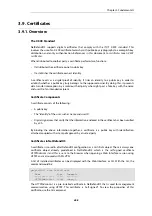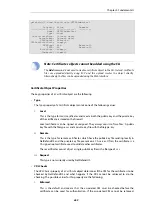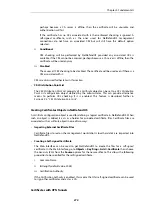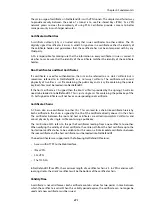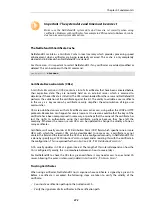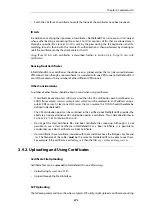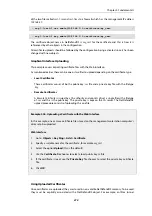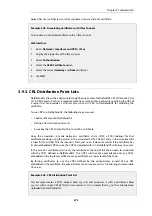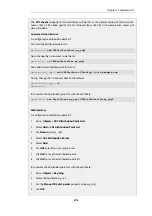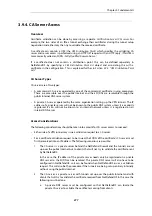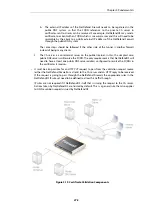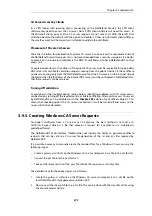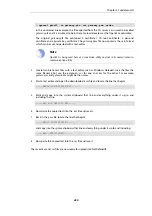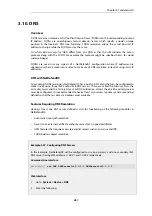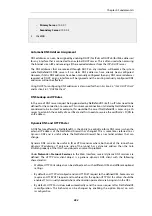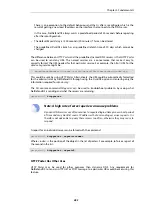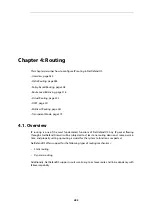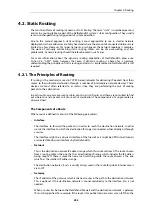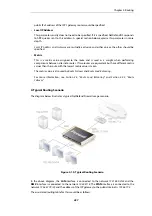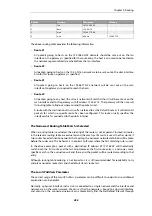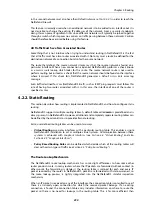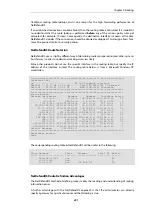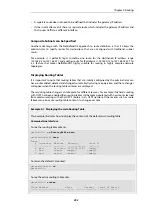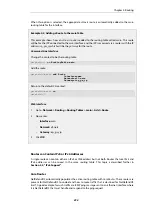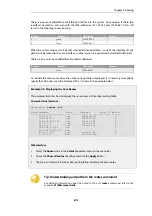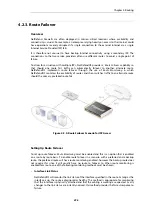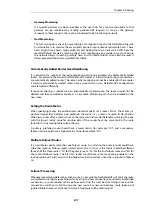
•
Primary Server: 10.0.0.1
•
Secondary Server: 10.0.0.2
3.
Click OK
Automatic DNS Address Assignment
DNS addresses can also be assigned by enabling DHCP (for IPv6) or DHCPv6 (for IPv6 addresses)
for any interface that is connected to an external DHCP server. This is often used when accessing
the Internet via an ISP and receiving all the required addresses from the ISP's DHCP server.
The DNS addresses that are received through DHCP on any interface will become the system
wide NetDefendOS DNS servers if no static DNS addresses have already been configured.
However, if static DNS addresses have been manually configured then any DNS server addresses
received via DHCP on any interface will be ignored and the existing manually configured DNS
addresses will not be affected.
Using DHCP for configuring DNS addresses is discussed further in
Section 5.2, “IPv4 DHCP Client”
and
Section 5.6.1, “DHCPv6 Client”
.
DNS Lookup and IP Rules
In the case of DNS server request being generated by NetDefendOS itself, no IP rules need to be
defined for the connection to succeed. This is because connections initiated by NetDefendOS are
considered to be trusted. For example, this would be the case if NetDefendOS is accessing a CA
server to establish the validity of a certificate and first needs to resolve the certificate's FQDN to
an IP address.
Dynamic DNS and HTTP Poster
A DNS feature offered by NetDefendOS is the ability to explicitly inform DNS servers when the
external IP address of the NetDefend Firewall has changed. This is sometimes referred to as
Dynamic DNS
and is useful where the NetDefend Firewall has an external address that can
change.
Dynamic DNS can also be useful in IPsec VPN scenarios where both ends of the tunnel have
dynamic IP addresses. If only one side of the tunnel has a dynamic address then the
Auto
Establish
property of the
IPsec Tunnel
object can solve this problem.
Under Network > Network Services in the Web Interface, several dynamic DNS services are
defined. The
HTTP Poster
client object is a generic dynamic DNS client with the following
characteristics:
•
Multiple
HTTP Poster
objects can be defined, each with a different URL and different optional
settings.
•
By default, an
HTTP Poster
object sends an HTTP
GET
request to the defined URL. Some servers
require an HTTP
POST
request and to achieve this the option
HTTP Post the Values
should be
enabled. This is usually needed when authentication parameters are being sent in the URL.
•
By default,
HTTP Poster
does not automatically send the server request after NetDefendOS
reconfiguration. This behavior can be changed by enabling the option
Repost on each
reconfiguration
.
Chapter 3: Fundamentals
282
Summary of Contents for NetDefendOS
Page 30: ...Figure 1 3 Packet Flow Schematic Part III Chapter 1 NetDefendOS Overview 30 ...
Page 32: ...Chapter 1 NetDefendOS Overview 32 ...
Page 144: ...Chapter 2 Management and Maintenance 144 ...
Page 284: ...Chapter 3 Fundamentals 284 ...
Page 392: ...Chapter 4 Routing 392 ...
Page 419: ... Host 2001 DB8 1 MAC 00 90 12 13 14 15 5 Click OK Chapter 5 DHCP Services 419 ...
Page 420: ...Chapter 5 DHCP Services 420 ...
Page 573: ...Chapter 6 Security Mechanisms 573 ...
Page 607: ...Chapter 7 Address Translation 607 ...
Page 666: ...Chapter 8 User Authentication 666 ...
Page 775: ...Chapter 9 VPN 775 ...
Page 819: ...Chapter 10 Traffic Management 819 ...
Page 842: ...Chapter 11 High Availability 842 ...
Page 866: ...Default Enabled Chapter 13 Advanced Settings 866 ...
Page 879: ...Chapter 13 Advanced Settings 879 ...

